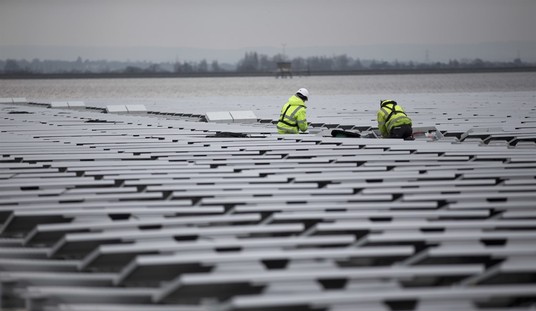OK, the term "misinformation" gets tossed around a lot. Much of the time, it's used to mean "anything I disagree with," the noun in question being a person, an organization, or - worst of all - a government. But there are times when it's the only term we can honestly apply, such as when someone deliberately obfuscates data to support an agenda. It may be by cherry-picking or by limiting the chronological scope.
As I've written before, I spent many years teaching people in major corporations, including many you'd recognize, how to solve problems. One of the first steps in identifying the problem is to determine the scope - what systems, parts, suppliers, or processes are involved, and how long the problem has been occurring. That last part - determining the chronological scope of the problem - is where climate scolds have been fudging the data and, in so doing, peddling misinformation.
First, they imply that humans are the only major driving factor in climate change. That's not true.
Climate warriors insist the planet’s climate is changing. No one will argue that. We have had ice ages burying the upper Midwest under a mile-thick sheet of ice, with the planet cooling enough to create these massive glaciers, followed by subsequent warming and melting.
Palm trees and camels, now dotting the hot equatorial regions of the planet, once grew and lived in the ice-free Arctic. This was millions of years ago, long before airplanes, air conditioners, and masculine charcoal grills.
Millions of years ago, there was no “man” to create man-made climate change. In fact, the modern form of humans appeared only 200,000 years ago. Yet the climate has been changing long before that.
The climate changed wildly at times. Forget the short (on the geological scale) tenure of humans. As recently as the Oligocene, the climate was warmer than it is now; the Paleocene/Eocene Thermal Maximum, about 56 million years ago, saw tropical forests as far north as Germany. The late Cretaceous was not only warmer, but sea levels were around 700 feet higher than today. There was a shallow sea where the Rocky Mountains are today. Antarctica was covered with a temperate forest.
I doubt any tyrannosaurs were hopping in their gas-powered SUVs to chase down a triceratops or two for dinner. So it's hard to know if the climate scolds are deliberately obfuscating this data or if they are just ignorant.
This kind of cherry-picking is used to support the cries of "OMG, we're burning up the planet!"
The Denver Post breathlessly exclaims, “Mile High City ties the 132-year-old high-temperature record.” Big deal. A 132-year-old record in golf or baseball might be noteworthy, but the Earth is 4.5 billion years old.
Does the Denver Post know if there was a warmer late September day in Denver in the 1700s? Or the 700s? Or 2700 BC? Or 27 million BC?
The thing is, we do know. We have some pretty decent methods for determining broad trends in warming and cooling in geologic history; as in all such endeavors, there is a margin of error involved, but it's the trends that we're looking for. And the trends are revealing.
The Washington (“Democracy Dies in Darkness”) Post surprisingly did just that. Here’s their headline from a few weeks ago, “Scientists have captured Earth’s climate over the last 485 million years. Here’s the surprising place we stand now.”
Researchers reconstructed global mean surface temperature using data assimilation, integrating geological data with climate model simulations. They discovered that “the Earth’s temperature has varied more dynamically than previously thought.”
Like all models, it’s not perfect, but it passed the peer review process at a prestigious journal, Science.
— Ward Clark (@TheGreatLander) October 28, 2024
Trends in atmospheric CO2 are even more revealing; I would remind you that plant life depends on atmospheric CO2, and plants are at the lower trophic level of producers; they literally convert sunlight and minerals into food, and without them, the planet would quickly become a lifeless hellscape:
The CO2 Coalition notes that over the past 140 million years, CO2 levels have fallen to dangerously low levels. Specifically, current levels are within 30 parts per million (ppm) of the “line of death,” the limit for plant survival. Once CO2 is below 150 ppm, plant life, and subsequently animal life, cease to exist.
— Ward Clark (@TheGreatLander) October 28, 2024
Note the scale: 140 million years. Humans, as in Homo sapiens - us - have been around for about 200,000 years. That's 0.14 percent of that timeframe. Even this scale is only a small part of the Earth's 4.55 billion-year history.
This is the scale on which the Earth, and our climate, move. It's a scale that's hard for us to comprehend. But it's there, and that's the data we have. That's the data that climate scolds ignore - or hide. Forget the problems with measuring for the moment; I've written about those and many other aspects of this issue before, and that's an argument for another day. The issue at hand is the claim that we are setting the planet on fire based on data taken over a hundred years or so without taking the big picture into account.
See Related: Deep Time, the Milky Way, and Earth's Climate - an Issue on a Staggering Scale
STUDY: Errors in Temperature Measuring Wildly Inflate Warming Claims
We can (and should) look back with awe at the scope and scale of the planet's cycles, and how wildly things have varied in that time. We can (and should) look with awe at the scope and scale of all the incredibly complex and chaotic systems that the planet has today. I'm reminded of it on this Monday in particular, as outside my office window, the first major snowfall of the winter is underway, and now the Great Land will pull a blanket of white over itself and sleep until spring; this will happen this year and every year, and we humans have a small part in it, other than keeping ourselves warm.
But we must also look at the big picture before listening to the climate scolds who would have us surrender our modern lifestyle - and, frankly, our liberty - over measurements taken over less than one percent of geologic time.














